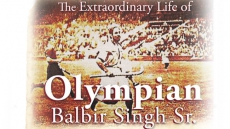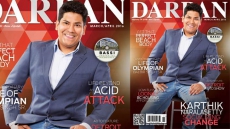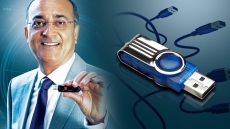Indians all over the world are making remarkable success in the technology industry through their innovations and ideas. Another name added to this list is that of Pranav Mistry. With more than 20 tech-based projects attached to his name, some as well-known as Samsung Galaxy Gear smart watch and SixthSense, the Global Vice President of Research at Samsung has been called ‘one of the ten best inventors in the world.’
Indians are ruling the technology industry in today’s world. New Delhi-based Rajeev Suri is the President and Chief Executive Offier (CEO) of Nokia; in 2014, Satya Nadella became the CEO of Microsoft. Almost a year ago, in August 2015, Sundar Pichai was appointed the new CEO of Google. Not just through ranks, but Indians all over the world are making remarkable progress in the tech industry through their innovations and ideas. Another name added to this list is that of Pranav Mistry. With more than 20 tech-based projects attached to his name, some as well-known as Samsung Galaxy Gear smartwatch and SixthSense, the Global Vice President of Research at Samsung has been called ‘one of the ten best inventors in the world.’Born and brought up in Palanpur, a city in Gujarat, India, little did Mistry know that he would one day contribute greatly to the growing age of technology. The traits of a successful inventor were however there right from his schooling days. Mistry’s friends described him as a master of “all trades in school,” with an extraordinary knowledge of computers. They knew he would be very famous one day. And indeed, today at the age of just 35, Mistry’s work has given him the recognition and merit he deserves.
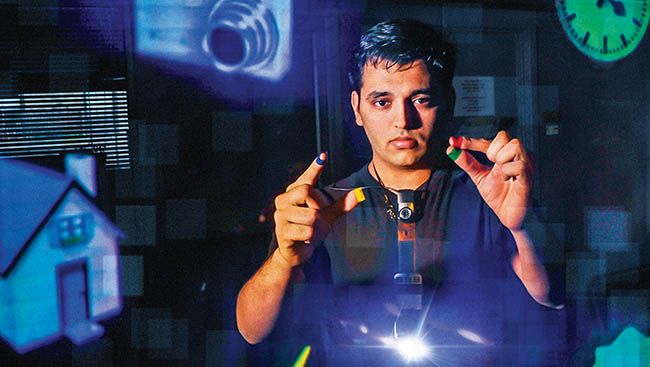
The young computer scientist holds a bachelor's degree in Computer Science and Engineering from the Nirma Institute of Technology in Ahmedabad, Gujarat; a Master's degree in Media Arts and Sciences from MIT, Massachusetts; and a Master of Design from Industrial Design Center, IIT Mumbai. He was also a research assistant and a PhD candidate at MIT Media Lab. Before joining MIT, Pranav worked as a UX Researcher with Microsoft. Mistry has worked with Google, CMU, NASA, UNESCO, and Japan Science & Technology among others. “From my engineering in computer science to my Masters in design, I worked on varied fields like interaction design, robotics, computer graphics, HCI, AI, information graphics, embedded systems, social computing, among others. I explored the fields with different projects and research papers,” states Mistry’s website about his qualifications.
The computer genius has created some of the most thought-provoking interfaces till date – namely Quickies, sticky notes that can be searched and can send reminders; a pen that draws in 3D; TaPuMa, a tangible public map for the physical world; Mouseless – an invisible computer mouse; SPARSH – a novel way to copy-paste data between digital devices; and Blinkbot – a gaze and blink controlled robot. Through all these experiments, Mistry “was trying to bring a part of the physical world to the digital world.”
It was, however, SixthSense – a wearable device that enables new interactions between the real world and the world of data – that put him on the world map and along the ranks of notable tech inventors.
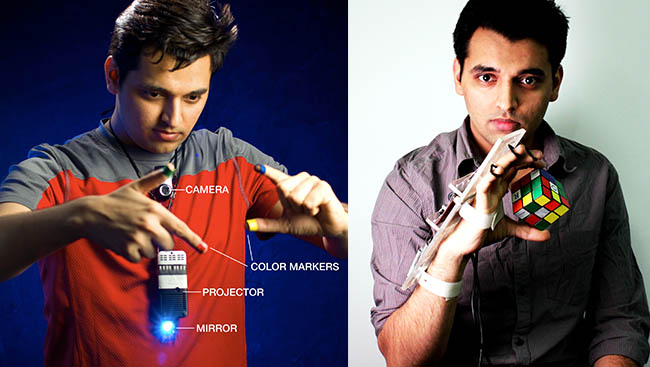
When Mistry was a PhD student at MIT's Media Lab, under the guidance of associate professor Pattie Maes, he created SixthSense. “We humans are not interested in computing. We want to know about things going around,” pointed out Mistry at his talk on ‘The Thrilling Potential Sense of SixthSense’ at TED (Technology, Entertainment, Design) India in 2009, “So I thought how about I take my digital world and paint the physical worked with that digital information?”
By using a camera and a tiny projector mounted in a pendant-like wearable device, SixthSense projects information onto surfaces, walls, and physical objects around us, and lets us interact with the projected information through natural hand gestures, arm movements, or our interaction with the object itself. “The most interacting thing with this technology is that you can carry your digital world with you wherever you go,” highlighted Mistry, who has been called one of ‘world’s 10 best inventors’ on TedTalks.
Users control SixthSense with simple hand gestures; putting your fingers and thumbs together to create a picture frame tells the camera to snap a photo, while drawing a symbol in the air allows you to check your e-mail. It is also designed to automatically recognize objects and retrieve relevant information: hold up a book, for instance, and the device projects reader ratings from sites like Amazon onto its cover. You can also use your palm if you don’t have a surface.

Mistry developed SixthSense in less than five months, and it cost him under $350 to build it. “Integrating information with our everyday objects will not only help us get rid of the digital divide but will also help us in some way to stay human. To be more connected to the physical world, and help us not be machines sitting in front of other machines,” said Mistry at his talk on SixthSense, whose research was awarded the 2009 Invention Award by Popular Science.
In 2012, Mistry got the opportunity to join Samsung as the Director of Research. “My role at Samsung is to imagine and create what is next,” said the young leader at Internationale Funkausstellung Berlin(IFA), where he introduced Samsung Galaxy Gear smart watch in 2013. Sharing details about the gadget, Mistry said in his speech that the goal was to “make it a wearable, an obtrusive, comfortable and yet something out of sci-fi. A wearable that is designed for everyone.”
Samsung Galaxy Gear – which includes a watch that works with its smartphones – is one of Mistry’s biggest contributions in the tech space.Made of stainless steel and in six vibrant colours, the smartwatch is engineered specifically for all-day comfort. It is seamlessly connected to the Galaxy smartphones.
The 35-year-old is also the director of the Think Tank Team – a group of interdisciplinary researchers, scientists, designers and engineers. Located within Samsung Research America in the heart of Silicon Valley, the team is crewed by experts in fields from industrial design to physics, with experience in institutions such as MIT, Disney Imagineering, Art+Com, RISD, and others. The team’s work covers a large time scale, from products that are ready to be mass-produced, to ideas that will take many years to come to fruition.
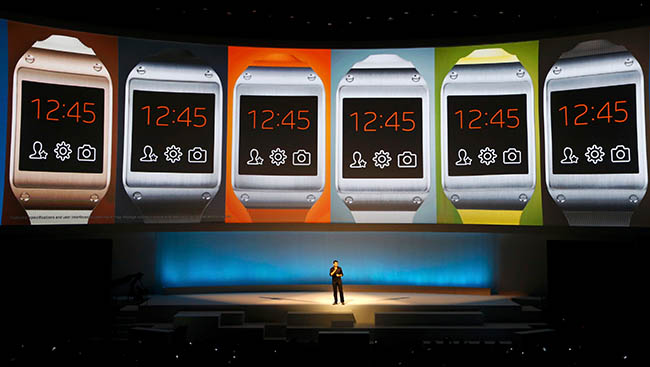
Coming back to technology, in one of his earlier interviews, Mistry pointed out that wearable technology (like Galaxy Gear) is the next big thing in the world of gadgets. “Our devices are getting bigger and bigger as the people want to have a bigger and better experience with their devices in order to see better, read better. But wearable technology is the solution to moving away from these rectangular screens. Wearable technology is the future making things compact and still giving us better personalised features.”
Besides being useful, interactive digital devices, another feature that comes across strongly from all of Mistry’s creation is the way design has been neatly incorporated with it. Mistry agrees, calling himself a “desigineer.” “Exposure to fields like design to technology and from art to psychology gave me a quite interesting viewpoint to the world. I love to see technology from a design perspective and vice versa. This vision reflects in almost all of my projects and research work as well,” he shares on his website.
Many different aspects have inspired this tech geek’s inventions. To begin with, Mistry was fortunate to have been bought up in a very positive and encouraging environment at home and school that helped nurture his curious mind. In fact, his father, Kriti Mistry, being an architect, hand crafted toys for his son rather than buying them from the market. “When I was in the ninth grade, he allowed me to dismantle his old scooter. I took out all the parts, understood their functions and rectified the defect,” Mistry stated in a TOI article published in 2009.
One will be surprised to know that Mistry derives inspiration not from sci-fi but from Indian mythologies. “Science fiction does not impress me at all. I draw a lot of inspiration from Indian mythology, like the Mahabharata,” he stated in a past interview, “For me, the epic is a great piece of science work. The architecture was drawn long back; we are just bringing in the technology. There is a lot of magic there which I want to realise in the future.”
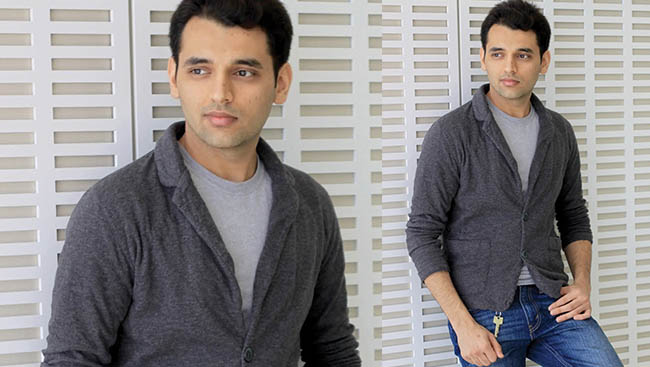
His past education and qualifications have played a big role as well in his creations. The degree from IIT wasa major turning point of his career. “It was an eye opener for me. Although I come from an engineering background, studying design here gave me a different perspective,” he elaborated in an interview. Mistry believes that his academic journey has helped him “learn different things and apply his knowledge accordingly.” Nature is another inspiration. He calls it his “guru.” “I read, I observe and I apply. The journey makes me very happy.”
One of the best features of Mistry’s projects is that they can be easily adapted by the Indian population no matter the financial situation of the individual. One of his well-used devices in India is Akshar. It enables millions of Indians, who do not understand English, to use digital devices like phones and computers using their own local language. “It was basically an attempt to create a mechanism for inputting Indic scripts in digital devices like mobile phones, kiosks, interactive TVs or personal computers,” explains Mistry who used it to talk to his mother.
Akshar takes advantage of the fact that most of the native Indian languages are based on the Brahmi script, allowing it to group five similar consonants together. Thus making it very easy and quick for an Indian to type and interact with their personal device in the native language.
Despite all this success, Mistry is still the humble, down-to-earth person he was when he began his journey as an inventor. The tech expert, through his creations, has always aimed at being “the voice of people and to make stuff people actually need.”

“Wherever I am, I just want to make that difference. I am not looking to being rich and not productive,” he emphasized in a past interview. He credits this selfless thinking to his upbringing in Palanpur. “I realised early in life that no one remembers you post death just because you were a rich person. But we all do know Albert Einstein, Mother Teresa, so we do remember those who make a change in history. We always remember those who contribute to society.”
From a young age, he also learnt to do things he loves. “I do what I love, and I love what I do, and thus, work has never been cumbersome. My job has me continent-hopping but if you don’t go around, you don’t see around. One learns a lot from observation,” Mistry said in an interview.
A portfolio such as Mistry’s deserves credit and rightfully, he has received it in the form of awards by various renowned organizations. Mistry was honoured as the Young Global Leader 2013 by World Economic Forum. He was also named to the MIT Technology Review TR35 as one of the top 35 innovators in the world under the age of 35. In 2010, he was one of Creativity Magazine’s Creativity 50.
Mistry has been listed as one of the 15 Asian Scientists To Watch by Asian Scientist Magazine. GQ India listed him as one of the most powerful Digital Indians. He was listed as one of the 37 Indians of Tomorrow by India Today. He received the Young Indian Innovator 2009 award by Digit Magazine.
The inspirational man has managed to lead a balanced life of work and play. Mistry has a wide variety of interests that he indulges in on a day-to-day basis. Some of them include photography, sports (table tennis), listening to Gujarati ghazals, trekking and mountaineering, watching movies, and travelling. His advice to youngsters, “Be yourself, everyone else is taken. Take risks.”

One does not need to think twice to understand that Mistry is truly an achiever in every sense. What makes his achievements even special is that they are made keeping the people in mind. Mistry’s useable, cost-effective gadgets are helping individuals connect the real world to the digital one, in turn helping in the smooth functioning of technological tasks. This extraordinary man, through his engaging work, has definitely changed the face of technology.
Read now on our e-magazine!

